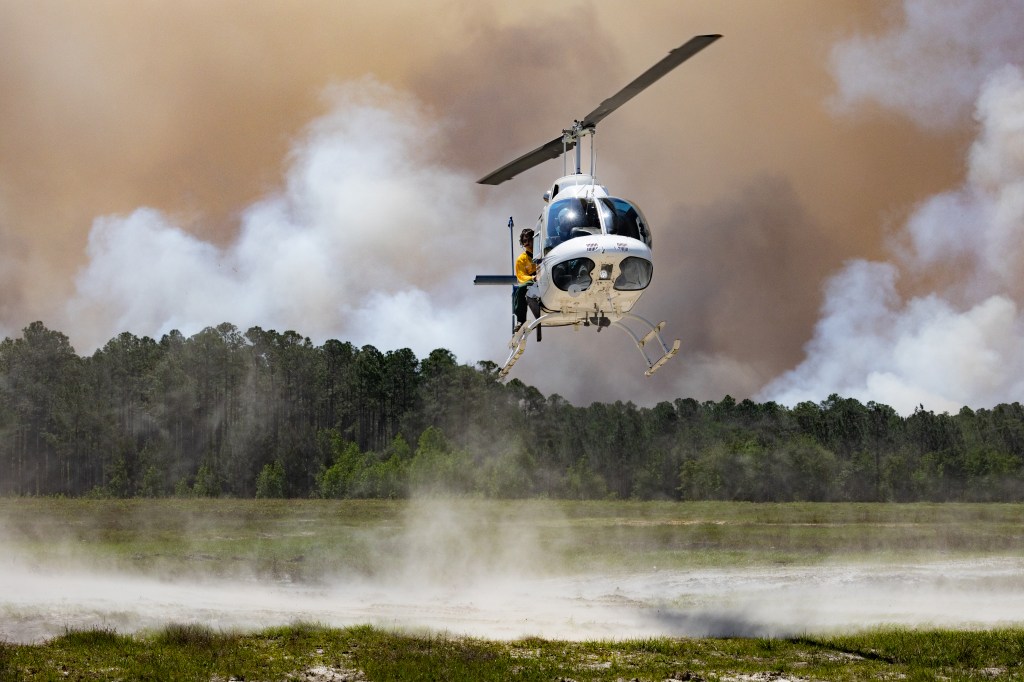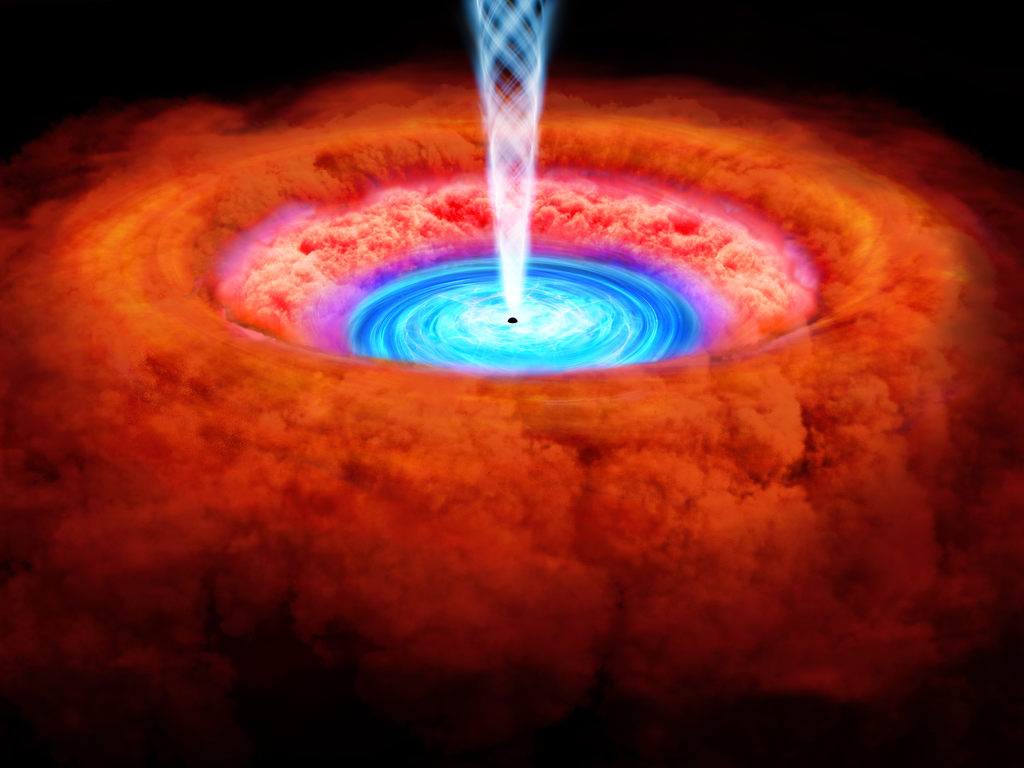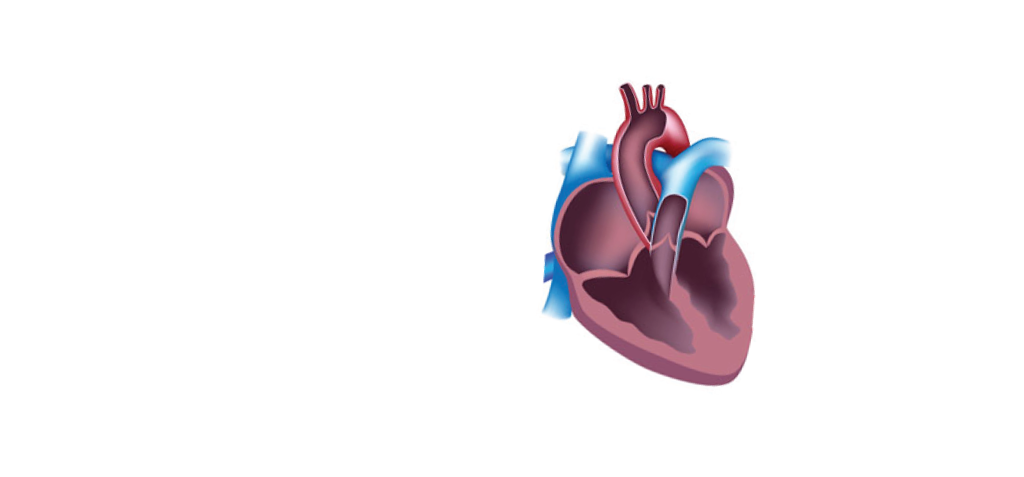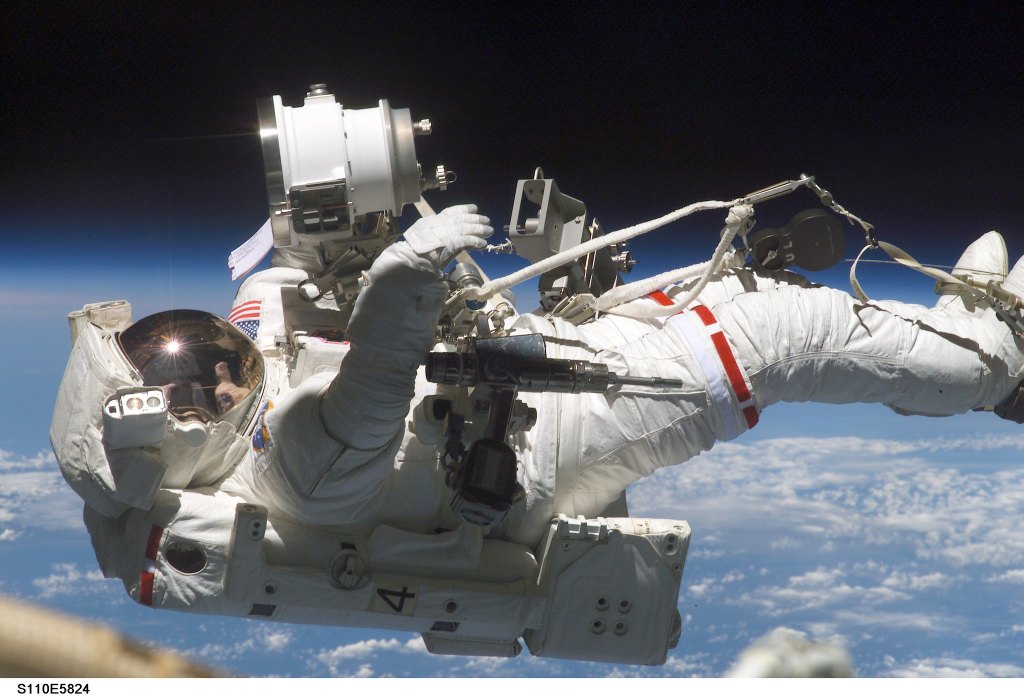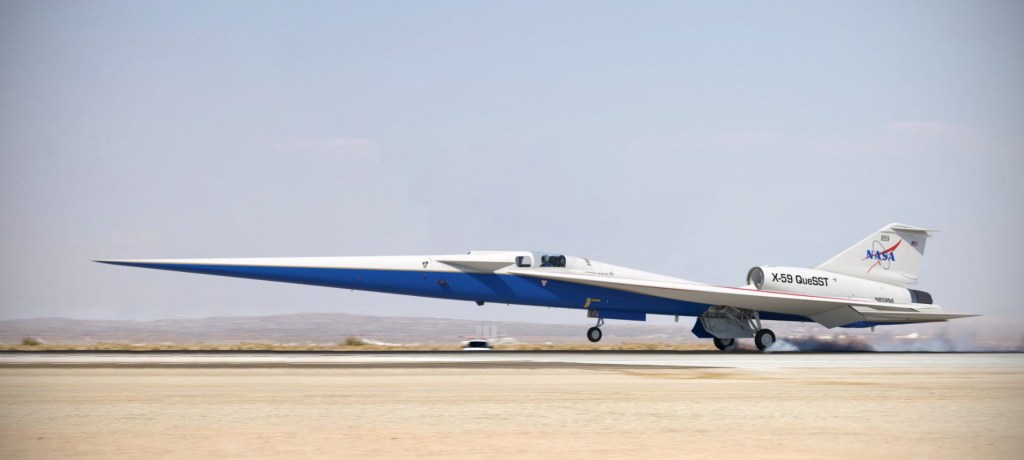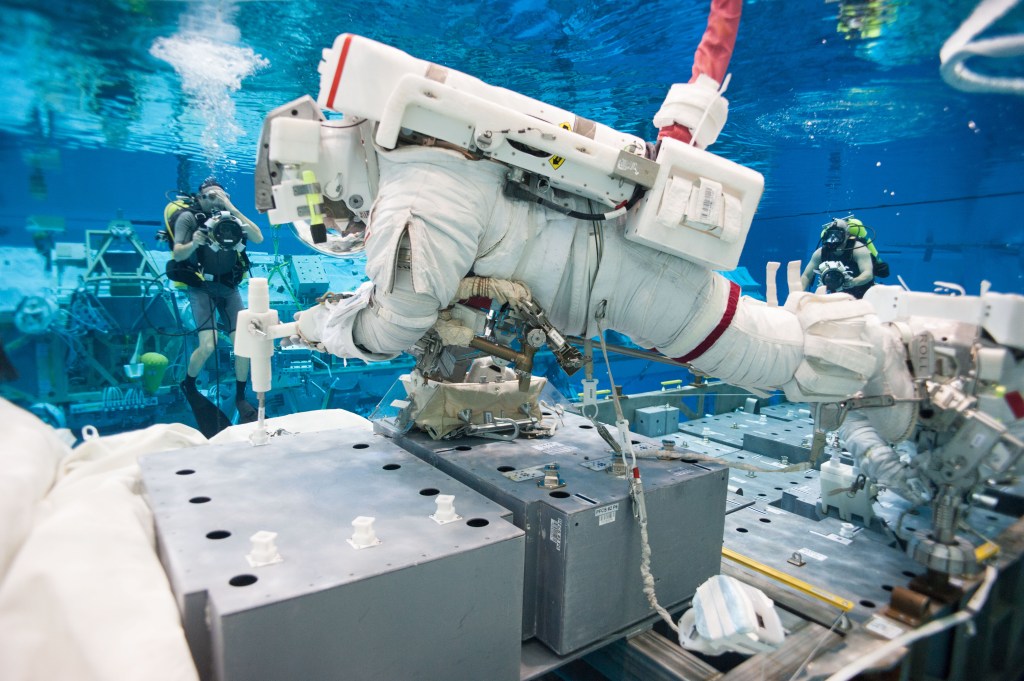11.0 Spacesuits

11.0 SPACESUITS
Section 11 includes requirements that are specific to spacesuits and suited operations. Spacesuits provide a self-contained habitable atmosphere that sustains human life and meets crew health, safety, and performance needs throughout suited mission durations. Suited activities (EVA, LEA or IVA) are an essential part of many human space missions. Unless otherwise identified as being applicable to EVA, IVA or LEA spacesuits, requirements in this section will be considered applicable to all three. For the purposes of this NASA Technical Standard, the following definitions are used for LEA Spacesuit Systems and EVA Spacesuit Systems:
- LEA Spacesuit System Definition: Any spacesuit system designed without an independent life support system and primarily for use during launch, entry, and abort phases of spaceflight, primarily to protect against toxic exposure, ebullism, hypoxia, and decompression sickness in the event of an unplanned cabin depressurization or toxic release into the cabin. It may also be worn during other dynamic phases of flight such as rendezvous and docking during which there is an increased risk of cabin depressurization due to cabin leaks. The duration for which LEA spacesuits are designed to operate will depend on mission scenarios and may range from a few hours to several days per use.
- EVA Spacesuit System Definition: Any spacesuit system designed to allow astronauts to perform tasks outside of a spacecraft or habitat in microgravity or partial gravity. Performance of spaceflight EVA consists of placing a human in a micro-environment that provides all the life support, nutrition, hydration, waste, and consumables management function of an actual space vehicle, while allowing crewmembers to perform mission tasks. EVA spacesuits are designed to be used for durations of less than a day due to potential human and suit system constraints. This includes all suited phases (e.g., prebreathe, leak checks, airlock/cabin/suitport depress).
As described in section 3.1 and many other requirements in this NASA Technical Standard are also intended to be applicable to spacesuits; section 11 is a subset of requirements that are uniquely applicable to spacesuits and suited operations. For planetary exploration missions, crew access to the planetary surface within an EVA suit is fundamental to mission success and safety. Suited activities allow many aspects of mission science, exploration, and maintenance. Compliance with the requirements stated here is crucial to the health, safety, and performance of the suited crew. Consult NASA-STD-3001, Volume 1, for EVA health and medical requirements. Consult EHP-10028, Extravehicular Activity and Human Surface Mobility (EHP) Exploration EVA (xEVA) System Compatibility Standards, for detailed guidance and constraints primarily concerned with safety, design of EVA support equipment, layout of EVA translation paths, and human-machine interfaces for crew operation. It is important for vehicle designers to understand and account for the interfaces between vehicle systems and spacesuits. These human system requirements should be reviewed for consideration of the suit-to-system interface.
11.1 Suit Design and Operations
11.1.1 Suited Donning and Doffing
[V2 11001] The system shall accommodate efficient and effective donning and doffing of spacesuits for both nominal and contingency operations.
[Rationale: Spacesuit donning, and doffing is a non-productive activity. Additionally, tedious and difficult tasks are more prone to neglect and human error. Finally, rapid donning and doffing must be done correctly in the right sequence and can be critical in any circumstance, including an emergency. System developers need to consider total system design and human accommodation, including emergency scenarios, assess donning task times, and evaluate features such as unassisted donning.]
11.1.2 Suit Materials Compatibility
[V2 11125] Pharmaceuticals, topical treatments and cleaning materials shall be compatible with suit materials (internally and externally).
[Rationale: The suit materials selected are expected to be exposed to medications used by the crewmember (i.e., topical medications) that need to be assessed for potential interactions with the materials and atmospheric filtration. This compatibility is to be considered when medications are selected for use by the crew and as supplied by the program in [V1 3004] In-Mission Medical Care. Additionally, the cleaning materials expected to be used will be assessed as stated in [V2 7083] Cleaning Materials.]
11.1.3 Suit Materials Cleanability
[V2 11126] The suit materials (internally and externally) shall be compatible with the expected cleaning materials and methods.
[Rationale: During the life of the suit, crew are typically expected to do regular maintenance or cleaning of the suit after each use. This cleaning may require removal of particulates from the exposure during an EVA or potentially an event where the suit was exposed to harmful contaminants. Cleaning materials selected are expected to be evaluated per [V2 7083] Cleaning Materials and any other methods as determined by the program. The suit materials selected are to consider the cleaning methods to be used (internally and externally), metabolic wastes (sweat, urine, etc.) and topical medications applied. The requirement for the medical kit supplied [V1 3004] In-Mission Medical Care will need to consider the design and materials supplied to the crew to prevent any restrictions to medication use when it is needed by a crew member wearing a suit, like during an EVA.]
11.1.4 Suit Environment
11.1.4.1 Suit Pressure Set-Points
[V2 11006] The suit shall provide the capability for the crewmember to select discrete suit pressure set-points within the suit operating pressure ranges during pressurized and unpressurized suited operations.
[Rationale: To implement operational concepts possible in a variable pressure suit, the crewmember is to be able to select the desired discrete pressure setting.]
11.1.4.2 Suit Equilibrium Pressure
[V2 11007] Suits shall maintain pressure within 1.72 kPa (0.25 psi) after the suit has achieved an equilibrium pressure for a set-point.
[Rationale: Maintaining a constant pressure level after a set-point has been reached is important to protect the crewmember from discomfort in body cavities and sinuses, especially in the ear. Maintaining a constant pressure level is intended to protect the crewmember in the pressurized suit. Because of the relatively small total pressure volume in the suit, it is important that the pressurized-suited crewmember is exposed to a pressure set-point that is constant (unchanging). Excess fluctuations in suit pressure cause pressurized-suited crewmembers to constantly re-equilibrate pressure in body cavities and sinuses, which increases the likelihood of pressure-induced discomfort in these areas.]
11.1.4.3 Continuous Noise in Spacesuits
[V2 11009] Suits shall limit suit-induced continuous noise exposure at the ear to NC-50 or below without the use of auxiliary hearing protection.
[Rationale: This requirement limits noise levels within the suit to allow for adequate voice communications and comfort. This requirement does not apply to alarms, communications, or to any noise experienced during maintenance activities. The noise attenuation effectiveness of hearing protection or communications headsets may not be used to satisfy this requirement unless they are included in the nominal suit configuration, i.e., not added to meet this requirement. Consideration is to be given to protect the frequencies necessary for communications transmission from ambient or suit-generated noise.]
11.1.4.4 EVA Suit Radiation Monitoring
[V2 11010] The suit shall provide or accommodate radiation monitoring and alerting functions to allow the crew to take appropriate actions.
[Rationale: Radiation monitors are to provide primary data for controlling crewmember radiation exposures during EVA. The current exposure limits for deterministic effects (short-term exposure limits) are specified in NASA–STD-3001, Volume 1; and to demonstrate compliance, radiation monitoring is required.]
11.1.4.5 Suited Crewmember Heat Storage
[V2 11011] The system shall prevent the energy stored by each crewmember during nominal suited operations from exceeding the limits defined by the range 3.0 kJ/kg (1.3 Btu/lb) > ΔQ stored > 1.9 kJ/kg (-0.8 Btu/lb), where ΔQ stored is calculated using the 41 Node Man or Wissler model.
[Rationale: This requirement applies to nominal microgravity EVA operations and nominal surface EVA operations. Excess heat load and accumulation may quickly reach human tolerance limits and may impair performance and health. Impairment begins when skin temperature increases greater than 1.4ºC (2.5ºF -17) (0.6ºC [1ºF -17.4]) core or if pulse is greater than 140 bpm). Increases in body core temperature may lead to associated performance decrements. Keeping the heat storage value below the performance impairment line allows the crewmember the ability to conduct complex tasks without heat-induced degradation. If the crewmember is in a suit, the heat load may increase rapidly. Supporting data from military aircrew protective ensembles suggest body temperature may increase more rapidly over time in suited crewmembers compared to those in a shirt-sleeve environment. The current change in heat storage limit is to allow nominal suited operations with crewmember metabolic rates of 528 to 2220 kJ/hr (500 to 2100 Btu/hr) without undue heat discomfort.]
11.1.5 Suit Waste Management
11.1.5.1 Suited Body Waste Management – Provision
[V2 11013] Suits shall provide for management of urine, feces, menses, and vomitus of suited crewmembers.
[Rationale: The total system is to be designed for body waste collection, as well as disposal of waste in the system’s waste management system and cleaning of the suit for reuse. Waste management items are to be able to contain and dispose of human waste with as much containment and isolation as possible. Provisions are to be available for personal hygiene and suit cleaning.]
11.1.5.2 EVA Suit Urine Collection
[V2 11028] EVA suits shall be capable of collecting a total urine volume of Vu = 0.5 +2.24t/24 L, where t is suited duration in hours.
[Rationale: This EVA suit requirement is separate from the LEA suit requirement below requirement [V2 11014] LEA Suit Urine Collection, to ensure that the increased EVA suit hydration (per requirement [V2 11030] EVA Suited Hydration, specifying an additional 8.1 fl oz ≈ 240 mL per hour for EVA suited operations) is a design consideration for EVA suit urine collection. This straightforward input-output equation does not consider variables such as metabolic rate, relative humidity, or hydration, which could affect the total volume. The voided urine is to be isolated to prevent inadvertent discharge in the suit that could result in injury to a crewmember’s skin or mucous membranes or damage to the suit system.]
11.1.5.3 LEA Suit Urine Collection
[V2 11014] LEA suits shall be capable of collecting a total urine volume of Vu = 0.5 + 2t/24 L throughout suited operations, where t is suited duration in hours.
[Rationale: This requirement allows crewmembers to eliminate liquid waste at their discretion without affecting work efficiency during suited operations. The suit is only responsible for the expected urinary output during the time that the crewmember is in the suit. The urinary collection system is to be capable of collecting all of the crewmember’s output in succession, with an average void varying from 100 to 500 mL (3.4 to 16.9 fl oz). The rate of urinary delivery into the system from the body varies by sex (greater for females because of lower urethral resistance) but averages 10 to 35 mL/s (0.34 to 1.2 fl oz/s). Maximum flow rate with abdominal straining in a female may be as high as 50 mL/s (1.9 fl oz/s) for a few seconds. Output collection capacity is designed to match water input potential; the Vu equation does not consider variables such as metabolic rate, relative humidity, or hydration, which could affect total urine volume. The voided urine is to be isolated to prevent inadvertent discharge in the cabin that could result in injury to a crewmember’s skin or mucous membranes or damage to equipment.]
11.1.5.4 Suit Urine Collection per Day – Contingency
[V2 11015] For contingency suited operations lasting longer than 24 hours, suits shall be capable of collecting and containing 1 L (33.8 fl oz) of urine per crewmember per day.
[Rationale: Urine output may be slightly greater or lower in various phases of the mission associated with g-transitions and fluid intake levels. Rarely, a single void might be as much as 1 L (33.8 fl oz), so the equipment is to be able to accommodate this maximum. Also, in the event of an unrecoverable vehicle pressure failure wherein an extended stay in the suit is used to maintain life, crewmembers are to have the capability to access fecal and urine collection systems. The voided urine is to be contained by the stowage and disposal hardware to prevent inadvertent discharge into the suit that could result in injury to the crewmember’s mucous membranes or equipment.]
11.1.5.5 Suit Feces Collection per Day – Contingency
[V2 11016] During contingency suited operations, suits shall be capable of collecting 75 g (0.17 lb ) (by mass) and 75 mL (2.5 fl oz) (by volume) of fecal matter per crewmember per day.
[Rationale: In the event of an unrecoverable vehicle pressure failure wherein an extended stay in the suit is used to maintain life, crewmembers are to have the capability to access fecal and urine collection systems. Fecal waste collection is to be performed in a manner that minimizes escape of fecal contents into the general suit environment during microgravity operations because of the high content of possibly pathogenic bacteria contained in the stool. In addition, there is the potential of injury to crewmembers and hardware that could result from such dissemination. EVA suits are to accommodate for fecal waste collection and containment during all suited activities. Suited activities are nominally not expected to exceed 10 hours. The waste quantities reflect the altered composition of the nutrition supplied during contingency suited operations and are characteristically low in residue.]
11.1.5.6 Suit Isolation of Vomitus
[V2 11017] Suits shall be shown to not create any catastrophic hazards in the event of vomitus from the crewmember.
[Rationale: Space adaptation sickness (SAS) has affected crewmembers in the first 72 hours of flight. The crew is nominally suited during the first 72 hours of flight for certain dynamic phases; vomiting in the suit may occur at these times or if a contingency EVA occurs within that timeframe. On the planetary surface, a high magnitude SPE could result in exposures that produce prodromal nausea and vomiting. If vomitus enters the internal suit environment, it must be kept away from the suited crewmember’s naso-pharyngeal space. Uncontrolled accumulation of vomitus may also interfere with a crewmember’s vision.]
11.1.6 Suit Vision
11.1.6.1 Suited Field of Regard
[V2 11018] Suits shall provide a field of regard sufficient to allow the crewmember to accomplish required suited tasks.
[Rationale: To enhance work efficiency index and mission success, the visor is to have minimal interference with nominal visual acuity. The visor is to promote an adequate field of regard to perform ground, IVA, and EVA tasks and prevent tunnel vision. Suit designers need to consult with vehicle designers.]
11.1.6.2 Suit Helmet Optical Quality
[V2 11019] Suit helmets shall have sufficient optical qualities to allow the crewmember to accomplish required suited tasks and maintain a level of SA necessary to maintain safety.
[Rationale: To enhance work efficiency index and mission success, the visor is to have minimal interference with nominal visual acuity. The visor is to minimize haze, discoloration, and fog.]
11.1.6.3 Suit Helmet Luminance Shielding
[V2 11020] Suit helmets shall provide protection to suited crewmembers from viewing objects with luminance that could prevent successful completion of required suited tasks.
[Rationale: Individual tasks or crewmembers may require or desire higher or lower lighting levels than that provided for other tasks or crewmembers.]
11.1.6.4 Suit Helmet Visual Distortions
[V2 11021] Suit helmets shall be free from visual distortion.
[Rationale: To enhance mission success, vision through a suited crewmember’s helmet is to be free of visual distortion.]
11.1.6.5 Suit Helmet Displays
[V2 11022] Suit helmet field of regard shall be unencumbered if helmet- or head-mounted displays are provided.
[Rationale: To enhance mission success, vision through a suited crewmember’s helmet is to have minimal interference with nominal visual acuity. Inclusion of any display in the helmet is to promote an adequate field of regard to perform ground, IVA, and EVA tasks and prevent tunnel vision.]
11.1.7 Suit Information Management
[V2 11023] The system shall allow the crewmember to effectively input, store, receive, display, process, distribute, update, monitor and dispose of relevant information on consumable levels, suit status and alerts, and biomedical data.
[Rationale: Feedback of relevant suit atmospheric and physiologic information to the crew allows better consumable management, improves optimization of EVA task performance, and reduces risk of physiologic stress/injury. Having insight into trends in physiological parameters and life-sustaining consumables allows the IVA or EVA crew to act prospectively in preventing unsafe operating conditions or responding to off-nominal scenarios. This requirement may be met by integrated systems with the details of each system’s responsibility defined in individual System Requirements Documents (SRDs) and in Information Requirements Documents (IRDs). Where feasible, it may be desirable for ground medical support to see biomedical telemetry during contingency and mission-preserving EVA, as well as during unrecoverable vehicle pressure loss, to ensure the health and safety of the crew. These data will also be monitored during nominal lunar surface operations to ensure the health and safety of the crew, although automated suit algorithms may be the primary method rather than ground medical support. Derived body core temperature and heart rhythm (real-time) are desired for microgravity operations, and derived body core temperature is desired for lunar operations. Note that crew may refer to the suited crewmember, the intravehicular crew, or ground crew. The recipients of the data must be defined by the program or project. Relevant information is determined through task analysis.]
11.1.8 Pressure Suits for Protection from Cabin Depressurization
[V2 11100] The system shall provide the capability for crewmembers to wear pressure suits for sufficient duration during launch, entry, descent (to/from Earth, or other celestial body) and any operation deemed high risk for loss of crew life due to loss of cabin pressurization (such as in mission dockings, operations during periods of high incidence of micrometeoroids and orbital debris (MMOD) or complex vehicle maneuvers).
[Rationale: Pressure suits for each crewmember are required to protect the crew in the event of a large cabin leak beyond the vehicle’s ability to feed and maintain a habitable atmosphere for an operationally relevant period of time. The duration the vehicle/suit system must maintain habitability during exploration class missions may be orders of magnitude longer than during LEO operations, where emergency return to Earth can be measured in hours. The use of pressure suits increases the probability of crew survival by allowing crewmembers sufficient time to remedy any vehicle failure and arrive at the next closest breathable atmosphere, either on Earth or alternative safe haven.
Launch, entry, and descent operations have the increased probability of decompression events based on past spaceflight history. Docking event risk profile is dependent on vehicle size, docking vestibules, and availability of access to alternate sealable pressurized volumes. For operations within the spacesuit, the crew will be protected against ebullism, hypoxia, toxic exposure and decompression sickness. Refer to the Chapter 11 for requirements (such as required O2 and CO2 concentrations, DCS prevention, suit pressures, waste management, etc.) associated with the design and capabilities of a pressure suit.
Note: Alternate methods of providing equivalent protection against decompression events are evaluated for each operational scenario. Also, reference [V2 9053] Protective Equipment for applicability.]
11.2 Suited Functions
11.2.1 Ability to Work in Suits
[V2 11024] Suits shall provide mobility, dexterity, and tactility to enable the crewmember to accomplish suited tasks within acceptable physical workload and fatigue limits while minimizing the risk of injury.
[Rationale: Suited crewmembers are to be able to perform tasks required to meet mission goals and operate human-system interfaces required for use during suited operations. Suits can limit the crew mobility, dexterity, and tactility to below that of an unsuited crewmember. Wear and tear on the suit as exposed to extraterrestrial environments must also be considered. Suit pressurization can further reduce crewmember capabilities. For example, the crewmember must not have to remove gloves to operate the controls while in the LEA suit. In the event of a rapid decompression event, the crewmember will not likely have enough time to don any unsecured equipment. Additionally, this will also need to include the ability for a suited crewmember to operate and work with any surface or rover activities.]
11.2.2 Suited Nutrition
[V2 11025] The system shall provide a means for crewmember nutrition in pressure suits designed for surface (e.g., Moon or Mars) EVAs of more than 4 hours in duration or any suited activities greater than 12 hours in duration.
[Rationale: Additional nutrients, including fluids, are necessary during suited operations as crewmember energy expenditure is greater during those activities. Additional kilocalories (kcal), based on metabolic energy replacement requirements from moderate to heavy EVA tasks, allow the crewmember to maintain lean body weight during the course of the mission. Lean body (especially muscular) weight maintenance is a key component of preserving crew health during missions and keeping performance at a level required to complete mission objectives. Nutritional supply during suited operations allows the crewmembers to maintain high performance levels throughout the duration of the EVA. Apollo astronauts strongly recommended the availability of a high-energy substance, either liquid or solid, for consumption during a surface EVA as mentioned in the Apollo Medical Summit. During contingency microgravity EVAs and/or for EVAs less than 4 hours in duration, this capability is not required. During long-duration suited operations such as an unplanned pressure reduction scenario, the crew is to be able to consume nutrition from an external source to maintain crew performance.]
11.2.3 Drinking Water
11.2.3.1 LEA Suited Hydration
[V2 11029] The system shall provide a means for on-demand crewmember hydration while suited, including a minimum quantity of potable water of 2 L (67.6 fl oz) per 24 hours for the LEA suit.
[Rationale: Potable water is necessary during suited operations to prevent dehydration caused by perspiration and insensible water loss, as well as to improve crewmember comfort. LEAsuited hydration must be available both while suited and unpressurized as well as suited and pressurized. Having the potable water system be rechargeable from an external source is acceptable as long as the suit system has sufficient capacity to allow on-demand ready access to water at crewmember discretion without impacting work efficiency. During long-duration LEAsuited operations such as an unplanned pressure reduction scenario, the crew is to be able to consume water from an external source to prevent crew performance degradation associated with dehydration.]
11.2.3.2 EVA Suited Hydration
[V2 11030] The system shall provide a means for on-demand crewmember hydration while suited, including a minimum quantity of potable water of 240 mL (8.1 fl oz) per hour for EVA suited operations.
[Rationale: Potable water is necessary during suited operations to prevent dehydration caused by perspiration and insensible water loss, as well as to improve crew comfort. Having the potable water system be rechargeable from an external source is acceptable as long as the internal suit reservoir has sufficient capacity to allow ready access to water without impacting work efficiency. Hundreds of microgravity EVAs have been performed using a 950 mL (32.1 fl oz) in-suit drink bag, but this alone does not meet the minimum recommendations for hydration during moderate activity. Factors that may affect an individual’s hydration needs include body size, sweat rates, thermal environment, humidity, and metabolic rate. Given the wide range of differences between people and EVA characteristics, 240 mL (8.1 fl oz)/hour is the minimum recommendation to cover most applications. During surface EVAs, crewmembers will most likely be suited for 10 hours, including approximately 7 hours expending energy on the lunar surface. Apollo astronauts strongly recommended the availability of an appropriate quantity of water for consumption during a lunar EVA. Specifically, Apollo astronauts recommended during the Apollo Medical Summit the availability of 240 mL (8.1 fl oz) per hour of water for consumption during a lunar EVA, with water available for contingency scenarios such as a 10-km walk-back in case of surface transport vehicle failure. The intent of this requirement is for the suit system to have sufficient capacity to allow on-demand ready access to water at crew-discretion without impacting work efficiency.]
11.2.4 Suited Medication Administration
[V2 11027] The system shall provide a means for administration of medication to a suited, pressurized crewmember for pressurized suited exposures greater than 12 hours.
[Rationale: As a contingency, administration of medication from an external source to a suited crewmember may be required at a time in which it is not possible to doff the suit, e.g., during an unplanned pressure reduction scenario. Medication and administration method designs are to be integrated into suit design. Additionally, considerations for medications to be used while a crewmember is suited will need to be assessed for use related to [V1 3004] Medical and Survival Kits.]
11.2.5 Suited Relative Humidity
[V2 11031] For suited operations, the system shall limit RH to the levels in Table 11.2-1— Average Relative Humidity Exposure Limits for Suited Operations.
[Rationale: Average humidity is to be maintained above the lower limits stated to ensure that the environment is not too dry for the nominal functioning of mucous membranes. During low humidity exposures, additional water is to be provided to the crew to prevent dehydration. Humidity is to be maintained below the upper limits for crew comfort to allow for effective evaporation and to limit the formation of condensation. Excess moisture in the glove can contribute to trauma at the fingertips.]
Table 11.2-1—Average Relative Humidity Exposure Limits for Suited Operations
11.2.6 LEA Suited Decompression Sickness Prevention Capability
[V2 11032] LEA spacesuits shall be capable of operating at sufficient pressure to protect against Type II decompression sickness in the event of a cabin depressurization.
[Rationale: LEA spacesuits are worn inside spacecrafts to protect crewmembers in the event of contingencies such as contamination or depressurization of the spacecraft cabin. For example, in Soyuz 11, a rapid depressurization due to a faulty valve occurred at an altitude of about 104 miles, ledding to the death of all three (unsuited) crewmembers within two minutes. Protection against serious life-threatening (Type II) DCS in the event of an unplanned rapid cabin depressurization depends on providing adequate suit pressure to crewmembers because there is no opportunity for oxygen prebreathe or immediate post event treatment. Based on best available data and computational models, LEA spacesuit pressure of 40 kPa (5.8 psia) will limit the probability of Type II DCS occurrence to less than 15% for a rapid depressurization when saturated at a cabin pressure of 14.7 psia. If cabin pressure is nominally less than 14.7 psia, as expected during Exploration missions, the resulting minimum suit pressure could be less than 5.8 psia.]
11.3 Suited Atmosphere
11.3.1 Suited Thermal Control
[V2 11033] The suit shall allow the suited crewmembers and remote operators to adjust the suit thermal control system.
[Rationale: The ability to control suited atmospheric conditions is important for crew health and comfort, and for mission tasks, to ensure efficient and effective performance. Temperature can be adjusted in a number of ways depending on the suit and vehicle system design (e.g., changing water flow, inlet temperature.]
11.3.2 Suited Atmospheric Data Recording
[V2 11034] Systems shall automatically record suit pressure, ppO2, and ppCO2.
[Rationale: Access to atmospheric data is needed for suit systems, as each of these parameters is critical to crew health and comfort. Additionally, the ability to view past recorded data helps to prevent suited environmental conditions that could harm the crew or suit system and can aid in the effort to troubleshoot problems. ppO2 can be directly measured or calculated indirectly and recorded. Recording of thermal comfort variables may be useful.]
1.3.3 Suited Atmospheric Data Displaying
[V2 11035] Suits shall display suit pressure, ppO2, and ppCO2 data to the suited crewmember.
[Rationale: These atmospheric parameters are critical to human health and comfort, and access to this atmospheric data needs to be provided to the crewmember. The crewmember needs to view the environmental status in real time to help prevent environmental conditions that could harm them or the suit system. The implementation of the display is addressed by various requirements in section 10 of this NASA Technical Standard.]
11.3.4 Suited Atmospheric Monitoring and Alerting
[V2 11036] Suits shall monitor suit pressure, ppO2, and ppCO2 and alert the crewmember when they are outside safe limits.
[Rationale: Systems are to be capable of monitoring the atmosphere to identify when parameters are outside set limits so that the system can alert the crew and the crew can take appropriate actions to maintain health and safety. See section 10.5.1, Audio Systems, in this NASA Technical Standard for additional information. Note that crew may refer to the suited crewmember, the intravehicular crew, or ground crew. The recipients of the data are defined by the program or project. Monitoring and alerting of thermal comfort variables may be useful.]
11.3.5 Nominal Spacesuit Carbon Dioxide Levels
[V2 11039] The spacesuit shall limit the inspired CO2 partial pressure (PICO2) in accordance with Table 11.3-1—Spacesuit Inspired Partial Pressure of CO2 (PICO2) Limits.
[Rationale: Spacesuit design (flow rate, helmet shape, etc.) and crewmember metabolic rates (average and transient) affect the extent to which CO2 accumulates inside a spacesuit and is inspired by crewmembers. Inspired CO2 partial pressure levels in Table 11.3-1 are based on review of scientific literature combined with past EVA experience, prescribed standardized human-in-the-loop testing, suit inlet CO2 of <2 mmHg, and suit ventilation utilized in heritage designs. Verification methods would utilize the standardized testing method as published in ICES-2018-15, Bekdash, et al., July 2018.
Note: Off-nominal CO2 values are not included within this NASA Technical Standard due to the unique circumstances of each mission (expected human performance, duration of exposure, access to medical care, etc.) and would be derived as a lower-level program/project requirement.]
Table 11.3-1—Spacesuit Inspired Partial Pressure of CO2 (PICO2) Limits †
The requirements in Table 11.3-1 are to be met in the presence of the expected average and transient metabolic rates for the full suited duration, including prebreathe, checkout, EVA, and repressurization time. Total duration in the suit is not to exceed 14 hours.
† The values in Table 11.3-1 are based on Shuttle and ISS EVA experience, representing a frequency of up to 4 EVAs over a 14-day mission or up to 5 EVAs during a 6-month mission. If additional frequency of EVAs beyond the existing experience base is required, monitoring of crewmembers for hypercapnic signs and symptoms will be necessary until a sufficient experience base is generated.
11.3.6 Contingency Spacesuit Carbon Dioxide Levels for Partial Gravity Scenarios
[V2 11040] The spacesuit inspired CO2 partial pressure (PiCO2) shall not exceed 20 mmHg during contingency scenarios up to a duration of 1 hour.
[Rationale: Standard is based on review of scientific literature combined with data from ground-based testing in 1-G. The ground testing performed included levels up to 30 mmHg in a simulated 1 hour walk back test, with physiological, subjective, and cognitive measures. All of the ground-based subjects finished the tests including the 30 mmHg test with minimal physiological, subjective, and cognitive effects. The testing was performed in 1-G and with the subjects starting at ambient CO2 levels (~ 0.4 mmHg) which is lower than the 3 mmHg nominal spaceflight vehicle standard and nominal spacesuit levels of 3-15 mmHg (see [V2 11039]). Since the ground testing scenario is not identical to flight conditions (partial gravity and baseline vehicle CO2 of 3 mmHg and suit CO2 levels between 3-15 mmHg) a conservative factor has been applied to establish the limit of 20 mmHg.
Note: This standard limit is to be used only during contingency scenarios where crew life is in jeopardy due to hardware failure and/or adverse operational conditions. Durations beyond 1 hour may impede the crew’s ability to function both physically and cognitively.]
11.4 Suited Metabolic Rate
11.4.1 EVA Suited Metabolic Rate Measurement
[V2 11037] The system shall measure or calculate metabolic rates of suited EVA crewmembers.
[Rationale: Real-time monitoring during EVA is a current medical requirement and provides awareness of exertion level, including whether or not exertion levels are above or below normal for a particular crewmember and task.]
11.4.2 EVA Suited Metabolic Data Display
[V2 11038] The system shall display metabolic data of suited EVA crewmembers to the crew.
[Rationale: Metabolic data are important indicators of human health and performance, and access to these data needs to be provided to the crew. The crew needs to view the metabolic information in real time to provide awareness and potential adjustment of exertion level, including whether or not exertion levels are above or below normal for a particular crewmember and task. Note that crew may refer to the suited crewmember, the intravehicular crew, or ground crew. The recipients of the data are defined by the program or project.]
11.5 Incapacitated Crew Rescue (ICR)
[V2 11101] Resources shall be provided to rescue an incapacitated suited crewmember(s).
[Rationale: Incapacitation of a suited crewmember can occur in microgravity or on planetary surfaces. An incapacitation event could render the affected crewmember partially or fully reliant on the rescuer crewmember either temporarily or continually during the ICR. Resources needed during an ICR include appropriate hardware aids (restraints, translational aids, lifting handles, hoisting devices, etc.), consumables, and operational planning for both the incapacitated crewmember and rescue crewmember for all ICR phases. ICR phases encompass the initial occurrence of the event through medical stabilization of the incapacitated crewmember inside the vehicle (including suit doffing).]









